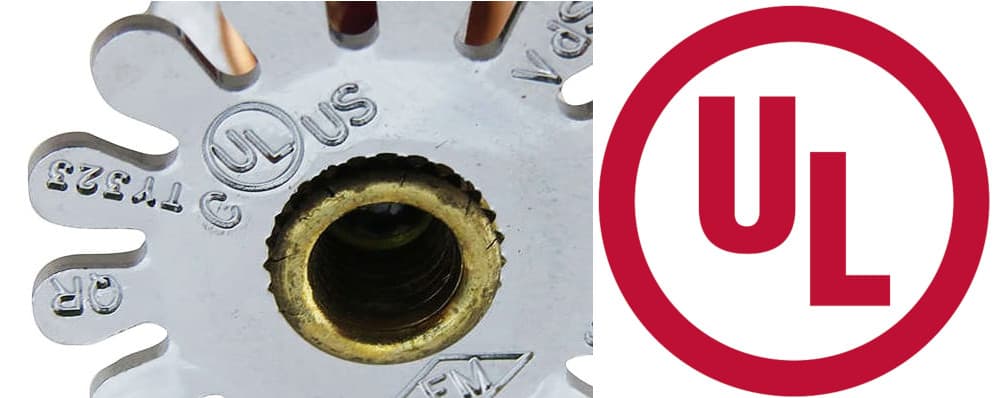The UL mark that certifies fire sprinklers and other fire protection equipment means quality and reliability
Have you ever noticed how some things just work? Many of the products we rely on daily are safe and reliable. You can trust that a phone battery won’t suddenly catch fire in your hand, a new kitchen stove won’t leak natural gas, and a fire sprinkler in the ceiling will do its job in an emergency.
In many cases, we can thank UL, formerly known as Underwriters Laboratories, for this for this safety and reliability. This international safety science company’s subsidiary, UL Standards & Engagement, sets performance standards for manufactured materials and products. And its UL Solutions, an OSHA-approved Nationally Recognized Testing Laboratory (NRTL), tests items to ensure performance.
UL assesses all kinds of manufactured devices, from consumer goods like laptops to key infrastructure, such as electrical grid components. However, this blog explains the organization’s crucial fire protection standards, focusing on fire sprinklers.
Read on to find out:
- The role of UL and NFPA’s “listed” requirement
- What a UL standard is, and how it relates to fire protection
- Different types of UL documents
- Which UL standards apply to fire protection products
- The UL 199 tests governing fire sprinklers
QRFS only sells listed/certified fire sprinklers. Check out our extensive online selection of commercial and residential sprinkler heads from Viking, Victaulic, Reliable, Tyco, and Senju.
The role of UL and NFPA’s “listed” requirement
Look closely at the devices around you, and you’re sure to find “UL Listed” stamped on some of them. This mark means an item has passed a comprehensive testing scheme that helps ensure a finished product performs specific functions reliably and safely.
Fire protection is no exception—and this evaluation is critical, given the equipment must save lives and property. The industry relies on system installation and maintenance standards published by the National Fire Protection Association (NFPA), which requires “most components that are critical to system performance” to be “listed.”
An NFPA-compliant listing (a somewhat equivalent term is “certification”) means that an item has been assessed by an independent organization “concerned with evaluation of products or services” that is “acceptable to the authority having jurisdiction (AHJ)” (NFPA 13 (2022): 3.23).” UL is one of the most important and well-regarded organizations that satisfies this requirement, along with FM Global and the International Standards Organization (ISO).
Whenever NFPA requires a fire protection component to be “listed,” it usually calls for compliance with a standard published by UL Solutions or FM Global, though others are in the mix. And as we discussed in our article on knock-off fire sprinklers, it’s a major red flag when a fire sprinkler isn’t listed.
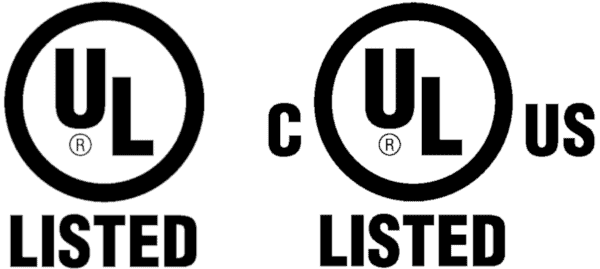
What are UL standards, and how do they relate to fire protection?
The fire protection industry revolves around codes and standards. Codes tell people what to do, like when to install fire sprinklers in certain buildings, while standards outline how to do it properly and safely. For example, NFPA 13: Standard for the Installation of Sprinkler Systems and NFPA 25: Standard for the Inspection, Testing, and Maintenance of Water-Based Fire Protection Systems explain how to install and maintain systems, respectively.
UL Standards & Engagement also publishes safety standards, but these documents aren’t aimed at designing or maintaining systems. Instead, they serve as benchmarks for testing finished products and materials to verify they are reliable, effective, and not hazardous.
UL standards are essential in the fire protection industry because lives depend on reliability. For fire sprinklers, UL 199: Standard for Automatic Sprinklers for Fire Protection Service, currently in its 13th edition, is the go-to document. Chapter 7 of NFPA 13 requires that many components, including all sprinkler heads, be “listed,” and compliance with UL 199 achieves it for sprinklers.
So, how does a sprinkler comply with a UL standard?
Recall that the “L” in UL originally stood for laboratories. To achieve a UL listing, manufacturers send samples of a sprinkler type to a lab, pay a fee, and have them tested according to the relevant UL standard or aspects of one. Multiple models are needed because many tests are harsh, damaging or destroying the heads while aiming to prove they are worthy. The same procedure applies to other important fire protection components beyond sprinklers.
A manufacturer may send their product to UL Solutions for testing, but other quality laboratories can also carry out relevant tests specified in UL standards.
For example, US federal regulations and the Occupational Safety and Health Administration (OSHA) require many fire protection products, like fire sprinklers, fire extinguishers, fire doors, and fire detection devices, to achieve certifications through a Nationally Recognized Testing Laboratory (NRTL). UL Solutions is one of 21 current NRTLs on OSHA’s list—probably the most recognized one.
You can read more about fire protection listings in our previous blog.

Types of UL documents
UL Standards and Engagement publishes hundreds of standards, yet technological innovation moves fast. The organization doesn’t have finalized criteria for every new technology, so it has different documents: standards for established and well-understood subjects and outlines of investigation for emerging technologies.
UL standards
A UL standard is a directly applicable and enforceable document describing essential quality requirements and a series of tests a component or product must pass. Standards are complete, regularly updated, and industry-recognized documents.
Outlines of investigation
An outline of investigation, which UL sometimes just calls an outline, is a more preliminary document. When a manufacturer seeks a listing for a technology or situation not covered by an established standard, UL investigates using hazard-based safety engineering (HBSE) principles.
The details of this first evaluation become an outline of investigation, forming a basis for future assessments. Once UL refines and revises an outline, it may be published as a new standard or absorbed into an existing one.

UL standards for fire sprinklers and fire protection systems
UL publishes many standards and outlines covering the fire protection industry.
The crucial one governing fire sprinklers is UL 199: Standard for Automatic Sprinklers for Fire Protection Service, which is currently in its 2023 edition. It covers almost all types of sprinklers, including standard spray, conventional, extended coverage, residential, and extended-coverage fast-response (ESFR), and more. However, UL 199 is just one standard related to fire protection.
Other documents cover specific use cases and related equipment, some of which have been absorbed into UL 199:
- UL 199B: Outline for Control Cabinets for Automatic Sprinkler Systems Used for Protection of Commercial Cooking Equipment
- UL 199G: Outline of Investigation for Fire Testing of Specific Application Sprinklers for Use in Attic Spaces
- UL 199K: Outline of Investigation for Fire Testing Specific Application Horizontal Sidewall Sprinklers for Installation in Racks Having Vertical and Horizontal Barriers (Ed. 1)
- UL 1626 Standard for Residential Sprinklers for Fire Protection Service (now covered by UL 199)
- UL 1767 Standard for Early Suppression Fast-Response Sprinklers (now covered by UL 199)
You can’t have a fire sprinkler system without pipes, fittings, and supports, so the organization issues documents covering various items intended for fire service; again, some of them have been “superseded” and replaced by other standards:
- UL 2443 Standard for Flexible Sprinkler Hose with Fittings for Fire Protection Service
- UL 852 Standard for Metallic Sprinkler Pipe for Fire Protection Service (Ed. 2)
- UL 1887 Standard for Fire Test of Plastic Sprinkler Pipe for Visible Flame and Smoke Characteristics
- UL 199P: Requirements for Combustible Piping for Sprinkler Systems (now superseded)
- UL 199S: Light Wall Steel Pipes for Sprinkler Systems for Fire Protection Services
- UL 1821 ANSI/CAN/UL Standard for Thermoplastic Sprinkler Pipe and Fittings for Fire Protection Service
- UL 1821A Outline of Investigation for Thermoplastic Sprinkler Pipe and Fittings for Low Pressure Dry Pipe Applications
- UL 203 Standard for Pipe Hanger Equipment for Fire Protection Service
- UL 203A Sway Brace Devices for Sprinkler System Piping
UL also has documents relevant to aspects of dry sprinkler systems and the antifreeze solutions employed in wet systems:
- UL 2879 Outline of Investigation for Nitrogen Generator Units for Use with Dry Pipe Sprinkler Systems
- UL 2901 Antifreeze Solutions for Use in Fire Sprinkler Systems
Antifreeze rules have been particularly relevant in the last 20 years, given the threat of fires caused or worsened by flammable solutions. UL 2901 was created in 2013 in response to this challenge and NFPA’s new rule that antifreeze must be listed to make it safer.
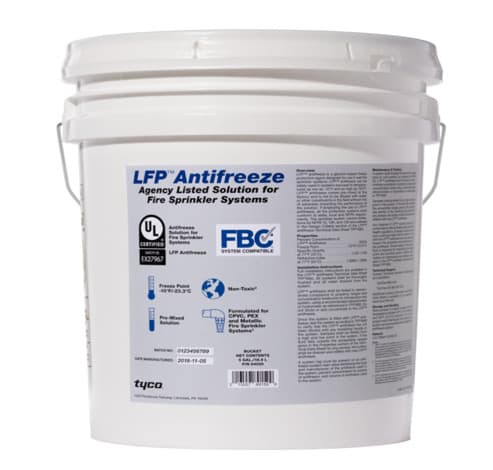
The basics of UL 199
If a manufacturer wants to produce and sell a new fire sprinkler, it needs to be listed, and submitting samples for testing according to UL 199 can accomplish this goal.
We can’t describe every test in UL 199—there are dozens of them, plus variations for different types of sprinklers. However, let’s review the test categories and some examples. The primary categories are:
- Physical strength and leakage tests
- Operation tests
- Exposure and corrosion tests
- Water flow and distribution tests
- Fire tests
- Manufacturing and production tests
Physical strength and leakage tests
These tests verify that fire sprinklers and various components can withstand punishment in realistic and extreme situations.
One of the first tests is the “Strength of Heat Responsive Element Test.” Testers install sprinklers in an apparatus that applies extreme pressure behind the element. The default version of the test has sample sprinklers subjected to 15 times their maximum design pressure for at least 100 hours. For sprinklers rated the default 175 PSI, that’s 2,625 PSI.
Some other physical strength and leakage tests include the “Impact Test,” the “Strength of Frame Test,” and the “Water Hammer Test.”
Operation tests
Tests from this category verify that a sprinkler will activate when it should in response to heat.
The quintessential assessment from this section is the oven test, where sprinklers are inserted into an oven and monitored until they go off. The time it takes the sample sprinklers to activate is used to calculate the response time index (RTI). Here’s a demonstration video from Dyne USA:
You can learn more about the oven test from our blog on regular fire sprinkler testing and replacement.
Exposure and corrosion tests
Fire sprinklers must be durable enough for their specific setting, so UL 199 has a section dedicated to testing how sprinkler heads hold up to different environmental stressors. The assessments include high-temperature exposure (which can last 90 days), low-temperature exposure, vibration, and corrosion tests.
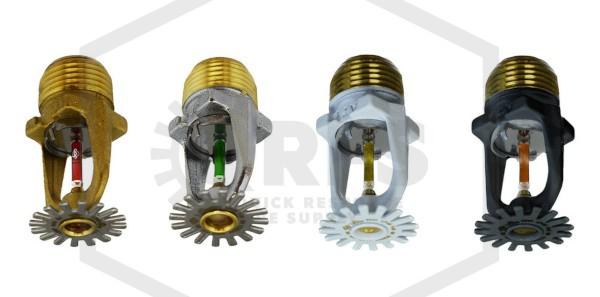
Water flow and distribution tests
Sufficient water flow and appropriate spray patterns are crucial for achieving a sprinkler’s design objectives, and UL 199’s “Water Flow and Distribution” section is dedicated to ensuring sprinklers achieve them.
The first test in this section is the “Discharge Coefficient Test,” which verifies a sprinkler’s advertised K-factor. The second is the “Water Distribution Test.”
If you’ve ever heard fire sprinkler experts explain spray patterns by imagining covering the floor with pans and watching them fill up with water—this is where it comes from. The water distribution of most sprinkler types is studied with “pan distribution tests,” where a tester really does measure how the discharge fills these receptacles.
Fire tests
These tests are where ‘the rubber meets the road.’ UL 199 pits fire sprinklers against actual fires in a controlled environment.
One fire test that many sprinklers undergo is called the “crib test,” where four open heads try to protect a wooden crib from burning. If these sprinklers can limit the weight lost by the crib to 20% and bring the ceiling temperature below 530° F, they pass.
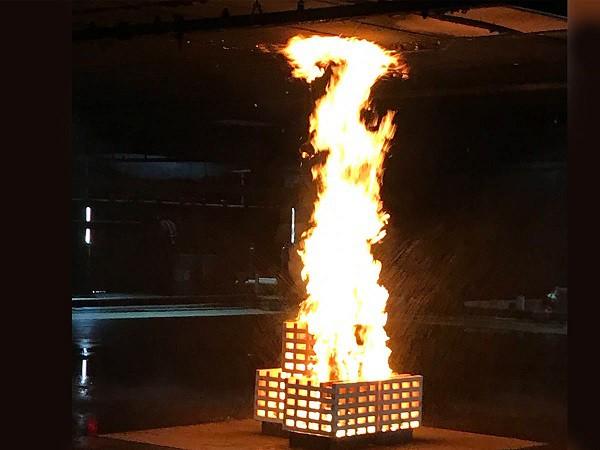
UL safety standards help ensure reliability in fire protection
Model codes and NFPA standards are crucial in fire protection but are only part of the equation. Testing standards, including those published by UL, ensure the safety and reliability of sprinklers, pipes, and other components that make up lifesaving systems.
As the industry and technology evolve, so do standards. Thus, UL 199 will change and improve, along with the other documents ensuring that fire protection products do their jobs consistently and well.
QRFS is your online source for listed fire sprinklers. Every sprinkler in our catalog is made by a major manufacturer and listed for fire service, so you can rely on quality.
Contact us with any questions at 888-361-6662 or support@qrfs.com.
This blog was originally posted at QRFS.com/blog. If this article helped you, check us out at Facebook.com/QuickResponseFireSupply or on Twitter @QuickResponseFS.


